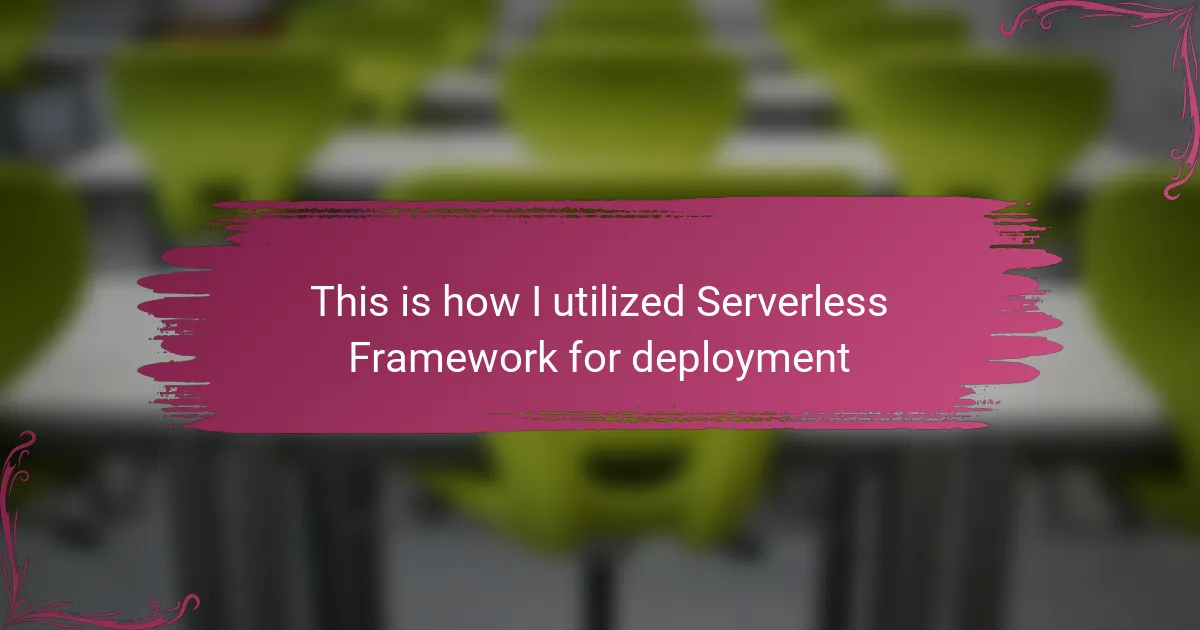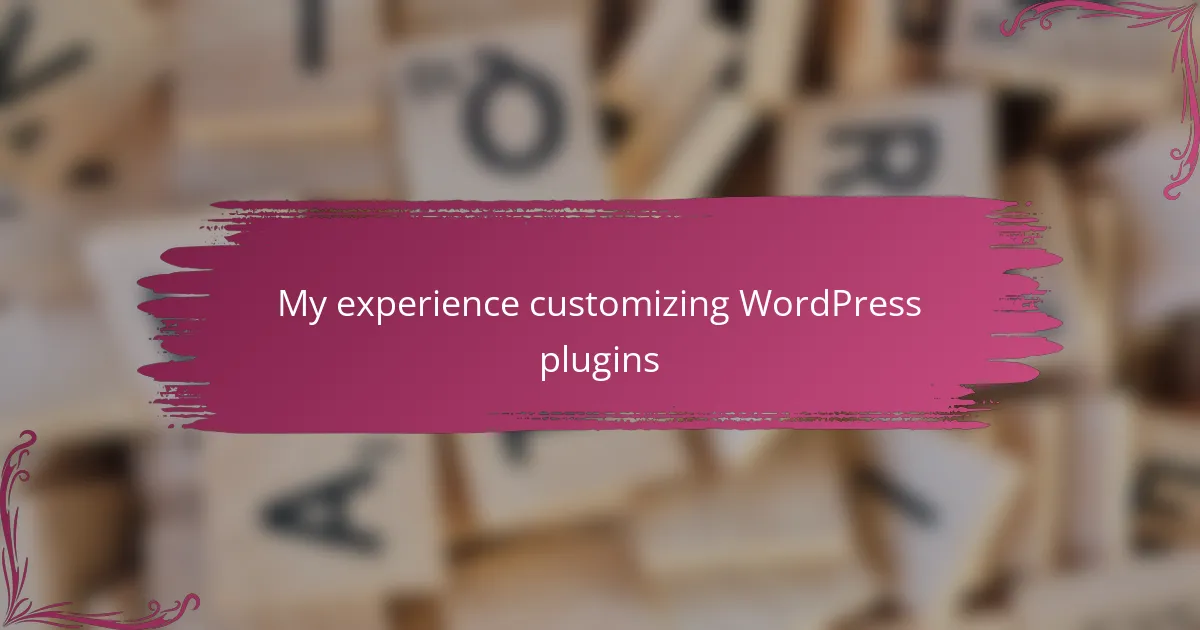Key takeaways Prometheus excels in monitoring with its powerful query language, PromQL, and a pull-based data collection model, making it effective for dynamic environments. The dimensional data model allows for intuitive filtering and aggregating of metrics through meaningful labels, enhancing the overall monitoring experience. Effective optimization of configurations, including setting scrape intervals and alerting rules, […]

This is how I utilized Serverless Framework for deployment
Key takeaways The Serverless Framework simplifies cloud function management, allowing developers to focus more on coding rather than infrastructure. Automatic scaling and cost efficiency are significant benefits, reducing cloud expenses by charging only for the execution time of functions. Clear error messages and real-time feedback during deployment help catch issues early, streamlining the development process. […]

My experience customizing WordPress plugins
Key takeaways Plugins enhance WordPress functionality, but understanding how they interact with the core is crucial for effective customization. Before modifying plugins, always explore built-in settings and maintain backups to prevent complications. Using essential tools like code editors and debugging tools enhances the customization process and helps track changes. Start small with changes, use child […]
How I setup CI/CD pipelines with CircleCI
Key takeaways Continuous Integration (CI) improves code quality by catching issues early through frequent merges and automated tests. CircleCI offers powerful automation features, including parallelism and configurable YAML files, enhancing efficiency in project deployment. Structuring projects effectively and managing dependencies are crucial for a smooth integration with CircleCI. Optimizing pipelines through caching, selective testing, and […]

How I implemented microservices with Kubernetes
Key takeaways Microservices architecture allows for scalable and flexible application development by breaking down applications into independent services, each managing a specific business function. Kubernetes simplifies container management and enhances reliability by automating scaling, deployment, and recovery processes. Designing microservices effectively requires clear boundaries, stateless architecture, and well-defined APIs to ensure smooth communication and prevent […]

How I secured applications with OAuth 2.0
Key takeaways OAuth 2.0 enhances security by using access tokens instead of passwords, allowing users to control data access. Configuring redirect URIs and scopes accurately is crucial for a successful authorization process. Token management should prioritize security, including encryption and short lifespan, to mitigate vulnerabilities. Building fallback mechanisms for user consent and handling errors improves […]

This is how I utilized Firebase for real-time data
Key takeaways Firebase offers seamless real-time data synchronization, enhancing user experiences with instantaneous updates across connected clients. The platform simplifies backend integration with a comprehensive ecosystem, including authentication, hosting, and analytics. Managing data security is made easier through flexible rules that can be tailored to evolving app needs with real-time validation. Best practices include keeping […]

This is how I leveraged Redis for caching
Key takeaways Redis caching enhances application performance by storing frequently accessed data in memory, significantly reducing retrieval times. Effective caching requires a balance between data freshness and performance, with considerations for cache consistency and expiration. Optimizing Redis involves configuring settings like eviction policies, using pipelining, and monitoring data access patterns for continuous improvement. Implementing caching […]

How I analyzed performance with New Relic
Key takeaways New Relic provides intuitive dashboards and metrics that simplify real-time performance monitoring, helping to identify bottlenecks and issues quickly. Setting up and customizing alert policies reduces notification clutter and focuses attention on significant performance issues, enhancing user experience. Tracking key metrics like response time, throughput, and Apdex score allows for a deeper understanding […]
